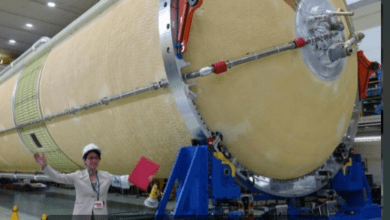Q&A: Developing a Tool for Identifying Cancerous Cells Based on Their Membranes

Dr. Basudev Roy, an Associate Professor in the Department of Physics at the Indian Institute of Technology, Madras, has recently authored a paper on cell membrane fluctuations and their potential application in diagnosing cancerous diseases. The paper has been published in the journal Physical Biology.
This interview is part of a campaign for Open Access Week 2023, which delves into the advantages of the fee discounts and waivers offered when publishing open access with IOPP.
READ: Qualcomm’s Grand Debut: On-Device AI Takes the Stage with Snapdragon 8 Gen3 and X Series
Tell us about your research.
In our team, we utilize biophysical tools to investigate cellular biological issues. We’ve devised a method for assessing cell membrane properties that holds particular promise for cancer research. Cancerous cells are known to exhibit greater softness compared to healthy cells, and our method can aid in the diagnosis of such diseases. Additionally, it enables us to examine how specific drugs impact cell membranes and whether targeted drugs can be effective in treating diseases.
Dr. Basudev Roy
Dr. Basudev Roy Our study initially involved estimating the behavior of membrane fluctuations under various conditions. Subsequently, we conducted experimental analyses on these membranes to determine cell membrane parameters, especially the bending rigidity. We then applied a drug called latrunculin-B to observe how the membrane softens and studied its response to slope fluctuations. This approach to determining cell membrane bending rigidity offers a higher level of precision compared to monitoring conventional “normal” fluctuations.
What have been the highlights and challenges of your research work?
I believe the most significant highlight of our work is its potential to positively impact crucial issues in medical research, such as understanding the effects of diseases on cells and identifying specific drugs for combating these diseases.
An important and intricate challenge lies in accurately determining cell parameters. Many of the current techniques in use are still not precise enough to effectively constrain these parameters.
Your research was published open access, what made you decide to do so?
Our research receives funding from the alliance between the Wellcome Trust and the Department of Biotechnology in India. According to the Alliance’s mandates, research outputs stemming from these funds must be published in an open access format. This is the primary reason we chose to publish our study open access.
Additionally, we strongly support open access as it allows individuals from disadvantaged communities to access and benefit from the research.
We offer a range of discounts and waivers to help authors with the costs of open access publishing. How did this make a difference when publishing your work?
Throughout my career, I’ve extensively published with IOPP. I’ve availed the range of discounts and waivers provided to publish my work open access, ensuring it reaches the widest possible audience and adheres to the mandates of my funding body.
What benefits have you seen so far from publishing your work open access?
Publishing open access enables a broader audience, including individuals from disadvantaged communities, to access my work. This contributes to improved dissemination and visibility for the research.






